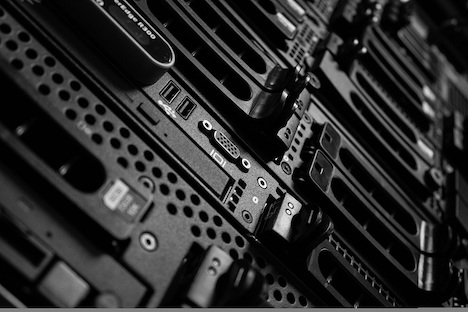Another record-setting year. That’s what the data center industry enjoyed in 2023, according to the latest research from Colliers.
According to Colliers’ 2024 Data Center Marketplace report, the overall U.S. data center vacancy rate tumbled to 1.7% last year, with demand for data center space especially strong in markets such as Dallas, Atlanta and Northern Virginia.
But it’s not just these major markets that are enjoying soaring demand. Colliers reported that Midwest markets, too, are seeing demand climb for data center space, pointing specifically to the Ohio market of Columbus as a hotbed of activity in this sector.
The low vacancy rates in the data center space aren’t a surprise. Companies need ever more data center space. This is a trend that isn’t slowing anytime soon. Just consider these numbers attributed to Statista Market Forecast: Global data center revenue is projected to have reached $325.9 billion in 2023. By 2028, data center revenue is expected to reach $438.7 billion, according to Statista.
What’s driving this growth? Plenty of it is because of the explsoive growth of AI.
As Colliers says in its report, 2023 will be remembered as the coming-of-age year for AI. Applications such as ChatGPT and Dalle have captured the imagination of companies and individuals, both of which are already testing the limits of what this technology can do. Colliers said that ChatGPT reached 100 million users across the globe in just two months. That’s impressive, especially when you consider that it took Facebook four-and-a-half years to reach this same milestone.
Colliers says that the ability to scale resources on demand, critical to the rapid growth of AI, is driving demand for hyperscale cloud providers like Amazon Web Services, Google Cloud and Microsoft Azure. Because of this, hyperscale providers increased their megawatt output across North America to more than 15.2 gigawatts last year, 17.8% more than the previous year.
This all points to 2024 being an even busier year in the data center market. Expect a surge in consruction of these facilities this year and continued tight vacancy rates.
Colliers reported that for the fifth consecutive year, the U.S. data center sector set a new record for absorption last year, absorbing 3,870 megawatts in 2023.
In somewhat of a surprise, the total amount of power under construction last year fell on a year-over-year basis by 68.8 megawatts. This wasn’t because of a lack of demand, though. Instead, the slowdown was caused by a lack of shovel-ready sites. Still, 282.1 megawatts of power was under construction last year.
This doesn’t mean that the data center space is free of challenges. Colliers pointed to NIMBYism as a big issue. Many residents don’t want large data centers built near them, and they will fight new construction.
Then there is the labor shortage in the construction field. It can be challenging for developers to find the workers they need to build all the data centers that their clients demand.
Construction costs are high, too, which can make it difficult for developers to build today.
“It’s harder to source the debt and equity to get the scale of these transactions done,” said Michael Johnston, partner with Menlo Equities, quoted in the Colliers report. “The required yields are not going down since you have to make enough of a profit margin to justify taking the associated risk. I don’t see this changing in the short term.”
Rafal Rak, president of VP Digital Realty, agreed that costs are posing a challenge to developers.
“Supply chain and associated costs are still in flux,” Rak said, also quoted in the Colliers report. “In particular, electrical equipment is still challenging and has tremendous risk.”
Then there are the challenges associated with the speed of how the data center industry is evolving. As Colliers says, data center designers and operators must constantly adjust to evolving technology, everything from the need for increased power density and cooling efficiency to security, remote monitoring, sustainability and green designs.
An example? Meta has stated that its upcoming AI-powered data centers will incorporate an expanded utilization of liquid cooling.
“The evolution of the data center industry continues to be dynamic with increasing cloud adoption and expanding use-cases for AI,” said Carrington Brown, senior managing director of development for Affinius Capital, as quoted in the Colliers report.




